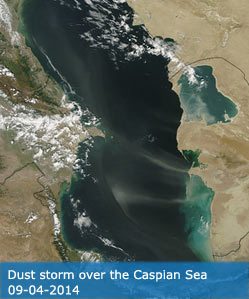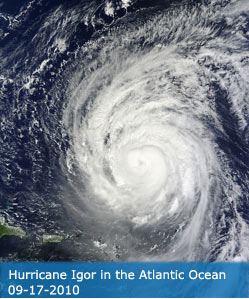Images
November 8, 2022 - Haze over China
Tweet
On November 7, 2022, the Moderate Resolution Imaging Spectroradiometer (MODIS) on board NASA’s Aqua satellite acquired a true-color image of a thick haze hovering over eastern China. Inland, the gray pall sits beneath the cloud layer and is so thick that the land beneath is obscured from view. The aerosols thin in the east as they approach the coastline to stretch over the Yellow Sea. Although this image shows a massive amount of haze, it is only a fraction of the entire expanse, which sweeps more than 2,600 kilometers (1,616 miles) from Chengdu, China to cross over the Korean Peninsula to reach the Sea of Japan (East Sea).
The haze likely contains airborne dust, smoke, pollution from industry and automobiles and other aerosols. Airborne particles are often measured in microns (also micrometers), or one-millionth of a meter. Particles with diameters of 2.5 microns or smaller—about one-thirtieth the width of a human hair—are believed to pose the greatest health risks because they can lodge deeply in the lungs, according to the U.S. Environmental Protection Agency.
On November 7, the World Air Quality Index Project website showed elevated levels of these fine particles, known as PM2.5, to be high over much of eastern China. For example, the Linyi Economic Development Zone registered PM2.5 of 278, which is listed as Very Unhealthy. This Zone is located 50 kilometers north of Jinan, the capital city of Shandong Province, near the eastern coast, and is not within the area of thickest haze.
Image Facts
Satellite:
Aqua
Date Acquired: 11/7/2022
Resolutions:
1km (1.4 MB), 500m (4.4 MB), 250m (13.3 MB)
Bands Used: 1,4,3
Image Credit:
MODIS Land Rapid Response Team, NASA GSFC
Tweet
On November 7, 2022, the Moderate Resolution Imaging Spectroradiometer (MODIS) on board NASA’s Aqua satellite acquired a true-color image of a thick haze hovering over eastern China. Inland, the gray pall sits beneath the cloud layer and is so thick that the land beneath is obscured from view. The aerosols thin in the east as they approach the coastline to stretch over the Yellow Sea. Although this image shows a massive amount of haze, it is only a fraction of the entire expanse, which sweeps more than 2,600 kilometers (1,616 miles) from Chengdu, China to cross over the Korean Peninsula to reach the Sea of Japan (East Sea).
The haze likely contains airborne dust, smoke, pollution from industry and automobiles and other aerosols. Airborne particles are often measured in microns (also micrometers), or one-millionth of a meter. Particles with diameters of 2.5 microns or smaller—about one-thirtieth the width of a human hair—are believed to pose the greatest health risks because they can lodge deeply in the lungs, according to the U.S. Environmental Protection Agency.
On November 7, the World Air Quality Index Project website showed elevated levels of these fine particles, known as PM2.5, to be high over much of eastern China. For example, the Linyi Economic Development Zone registered PM2.5 of 278, which is listed as Very Unhealthy. This Zone is located 50 kilometers north of Jinan, the capital city of Shandong Province, near the eastern coast, and is not within the area of thickest haze.
Image Facts
Satellite:
Aqua
Date Acquired: 11/7/2022
Resolutions:
1km (1.4 MB), 500m (4.4 MB), 250m (13.3 MB)
Bands Used: 1,4,3
Image Credit:
MODIS Land Rapid Response Team, NASA GSFC




